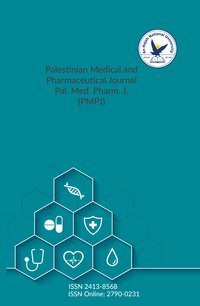Synthesis, Characterization, Molecular Docking, and Preliminary Antimicrobial Evaluation of Thiazolidinone Derivatives
Article info
2023-06-22
2023-08-26
2024-06-01
181 - 192
Keywords
- Antimicrobial resistance
- Thiazolidine-4-One
- Molecular docking
- Drug discovery
- Antimicrobial agents
- Com-puter-aided drug design
Abstract
Several derivatives carrying thiazolidine-4-one pharmacophore were prepared to evaluate their antimicrobial activities. The set of compounds were shown to possess potential activities as determined by molecular docking studies for both candidal (14-alpha demethylase) and bacterial enzymes (Penicillin binding protein of E. coli). In vitro antimicrobial activities were also performed to confirm the molecular docking results. Molecular characterization by spec-tral techniques (FT-IR, 13C NMR and 1H NMR) was carried out to confirm the identity of the synthesized compounds. The synthesized compounds were evaluated for antibacterial and anticandidal activity by comparing them with the reference drugs (positive controls) ceftriax-one and fluconazole respectively. Four bacterial species (Klebsiella pneumonia, Escherichia coli, Staphylococcus epidermis, Staphylococcus aureus) and one fungal species (Candida albicans) were inoculated into petri dishes and were expose to the synthesized compounds by well diffusion method. The series of the proposed compounds were successfully synthesized and some of them were proven to have antibacterial activities comparable to the reference drug. Particularly, the compounds 2c and 2a posessed activities against K. pneumomia being higher than ceftriaxone with average inhibition zone diameters of 17 mm and 16 mm at highest concentration respectively. Compound 2b was effective against E. Coli also yielding higher activity than ceftriaxone achieving an average diameter of 17 mm at the highest concentration.
Hussein, S. S., Ali, K. F., & Al-Saady, F. A. (2024). Synthesis, Characterization, Molecular Docking, and Preliminary Antimicrobial Evaluation of Thiazolidinone Derivatives. Palestinian Medical and Pharmaceutical Journal, 9(2), 181–192. https://doi.org/10.59049/2790-0231.1152
[1]S. S. Hussein, K. F. Ali, and F. A. Al-Saady, “Synthesis, Characterization, Molecular Docking, and Preliminary Antimicrobial Evaluation of Thiazolidinone Derivatives,” Palestinian Medical and Pharmaceutical Journal, vol. 9, no. 2, pp. 181–192, Jun. 2024, doi: 10.59049/2790-0231.1152.
Hussein, Sarmad Saadi, et al. “Synthesis, Characterization, Molecular Docking, and Preliminary Antimicrobial Evaluation of Thiazolidinone Derivatives.” Palestinian Medical and Pharmaceutical Journal, vol. 9, no. 2, June 2024, pp. 181–92. Crossref, https://doi.org/10.59049/2790-0231.1152.
1.Hussein SS, Ali KF, Al-Saady FA. Synthesis, Characterization, Molecular Docking, and Preliminary Antimicrobial Evaluation of Thiazolidinone Derivatives. Palestinian Medical and Pharmaceutical Journal [Internet]. 2024 Jun;9(2):181–92. Available from: http://dx.doi.org/10.59049/2790-0231.1152
Hussein, Sarmad Saadi, Karima Fadhil Ali, and Fouad Abdulameer Al-Saady. “Synthesis, Characterization, Molecular Docking, and Preliminary Antimicrobial Evaluation of Thiazolidinone Derivatives.” Palestinian Medical and Pharmaceutical Journal 9, no. 2 (June 2024): 181–92. https://doi.org/10.59049/2790-0231.1152.
Synthesis, Characterization, Molecular Docking, and Preliminary Antimicrobial Evaluation of Thiazolidinone Derivatives
معلومات المقال
2023-06-22
2023-08-26
2024-06-01
181 - 192
الكلمات الإفتتاحية
- Antimicrobial resistance
- Thiazolidine-4-One
- Molecular docking
- Drug discovery
- Antimicrobial agents
- Com-puter-aided drug design
الملخص
Several derivatives carrying thiazolidine-4-one pharmacophore were prepared to evaluate their antimicrobial activities. The set of compounds were shown to possess potential activities as determined by molecular docking studies for both candidal (14-alpha demethylase) and bacterial enzymes (Penicillin binding protein of E. coli). In vitro antimicrobial activities were also performed to confirm the molecular docking results. Molecular characterization by spec-tral techniques (FT-IR, 13C NMR and 1H NMR) was carried out to confirm the identity of the synthesized compounds. The synthesized compounds were evaluated for antibacterial and anticandidal activity by comparing them with the reference drugs (positive controls) ceftriax-one and fluconazole respectively. Four bacterial species (Klebsiella pneumonia, Escherichia coli, Staphylococcus epidermis, Staphylococcus aureus) and one fungal species (Candida albicans) were inoculated into petri dishes and were expose to the synthesized compounds by well diffusion method. The series of the proposed compounds were successfully synthesized and some of them were proven to have antibacterial activities comparable to the reference drug. Particularly, the compounds 2c and 2a posessed activities against K. pneumomia being higher than ceftriaxone with average inhibition zone diameters of 17 mm and 16 mm at highest concentration respectively. Compound 2b was effective against E. Coli also yielding higher activity than ceftriaxone achieving an average diameter of 17 mm at the highest concentration.
Hussein, S. S., Ali, K. F., & Al-Saady, F. A. (2024). Synthesis, Characterization, Molecular Docking, and Preliminary Antimicrobial Evaluation of Thiazolidinone Derivatives. Palestinian Medical and Pharmaceutical Journal, 9(2), 181–192. https://doi.org/10.59049/2790-0231.1152
[1]S. S. Hussein, K. F. Ali, and F. A. Al-Saady, “Synthesis, Characterization, Molecular Docking, and Preliminary Antimicrobial Evaluation of Thiazolidinone Derivatives,” Palestinian Medical and Pharmaceutical Journal, vol. 9, no. 2, pp. 181–192, Jun. 2024, doi: 10.59049/2790-0231.1152.
Hussein, Sarmad Saadi, et al. “Synthesis, Characterization, Molecular Docking, and Preliminary Antimicrobial Evaluation of Thiazolidinone Derivatives.” Palestinian Medical and Pharmaceutical Journal, vol. 9, no. 2, June 2024, pp. 181–92. Crossref, https://doi.org/10.59049/2790-0231.1152.
1.Hussein SS, Ali KF, Al-Saady FA. Synthesis, Characterization, Molecular Docking, and Preliminary Antimicrobial Evaluation of Thiazolidinone Derivatives. Palestinian Medical and Pharmaceutical Journal [Internet]. 2024 Jun;9(2):181–92. Available from: http://dx.doi.org/10.59049/2790-0231.1152
Hussein, Sarmad Saadi, Karima Fadhil Ali, and Fouad Abdulameer Al-Saady. “Synthesis, Characterization, Molecular Docking, and Preliminary Antimicrobial Evaluation of Thiazolidinone Derivatives.” Palestinian Medical and Pharmaceutical Journal 9, no. 2 (June 2024): 181–92. https://doi.org/10.59049/2790-0231.1152.

Since 2022
Cite Score (Scopus): 0.8
Time to First Decision: 3 Days
Submission to Acceptance: 45 Days
Acceptance to Publication: 64 Days
Acceptance Rate: 17%
Why should you
Publish With Us?
An-Najah National University
Nablus, Palestine
Nablus, Palestine
- P.O. Box
- 7, 707
- Fax
- (970)(9)2345982
- Tel.
- (970)(9)2345560
- (970)(9)2345113/5/6/7-Ext. 2628
- [email protected]
- EIC
- Prof. Waleed Sweileh
The Palestinian Medical and Pharmaceutical Journal (Pal. Med. Pharm. J.) © 2024 by An-Najah University, Nablus, Palestine is licensed under CC BY-NC 4.0
News and Views
